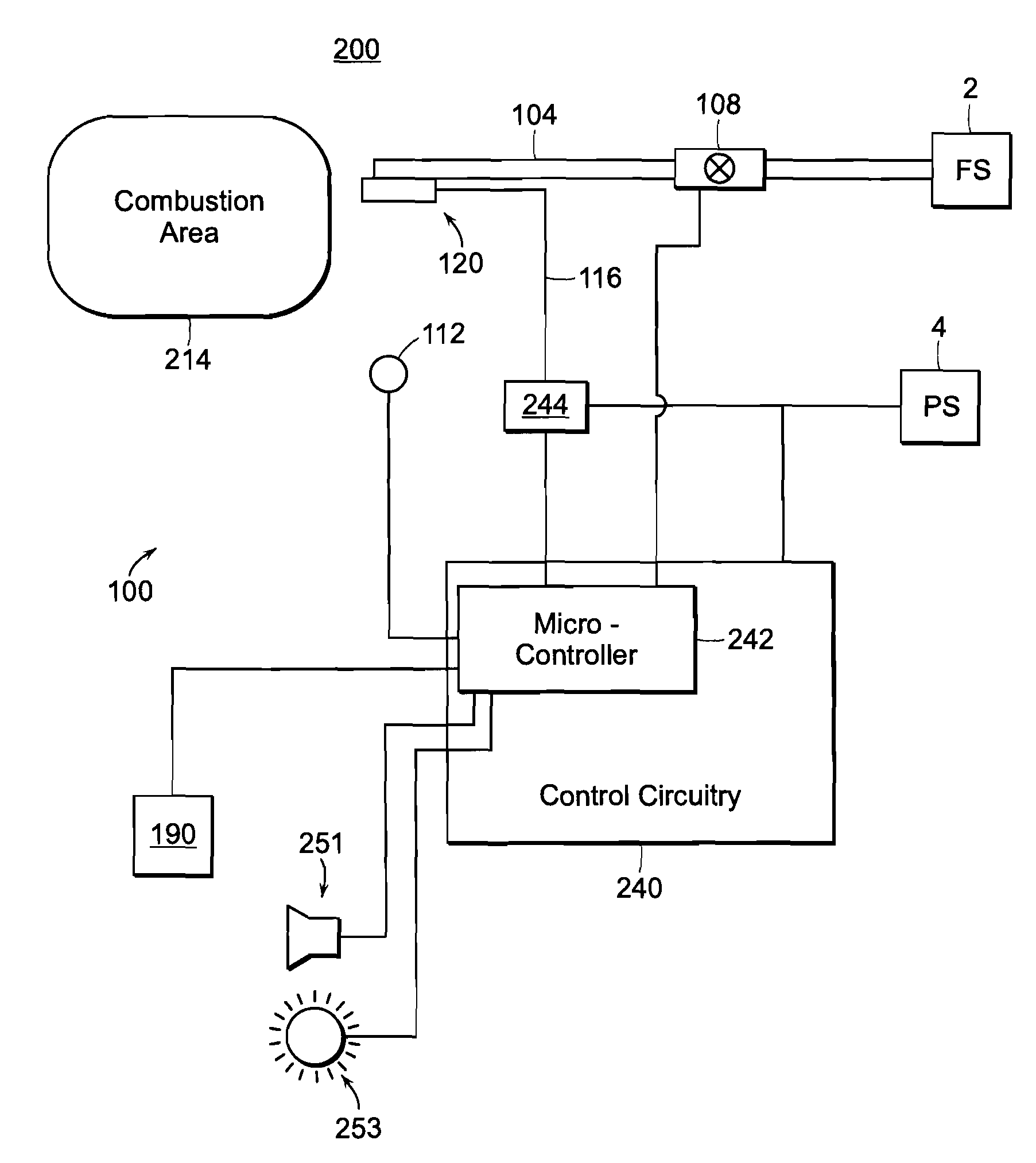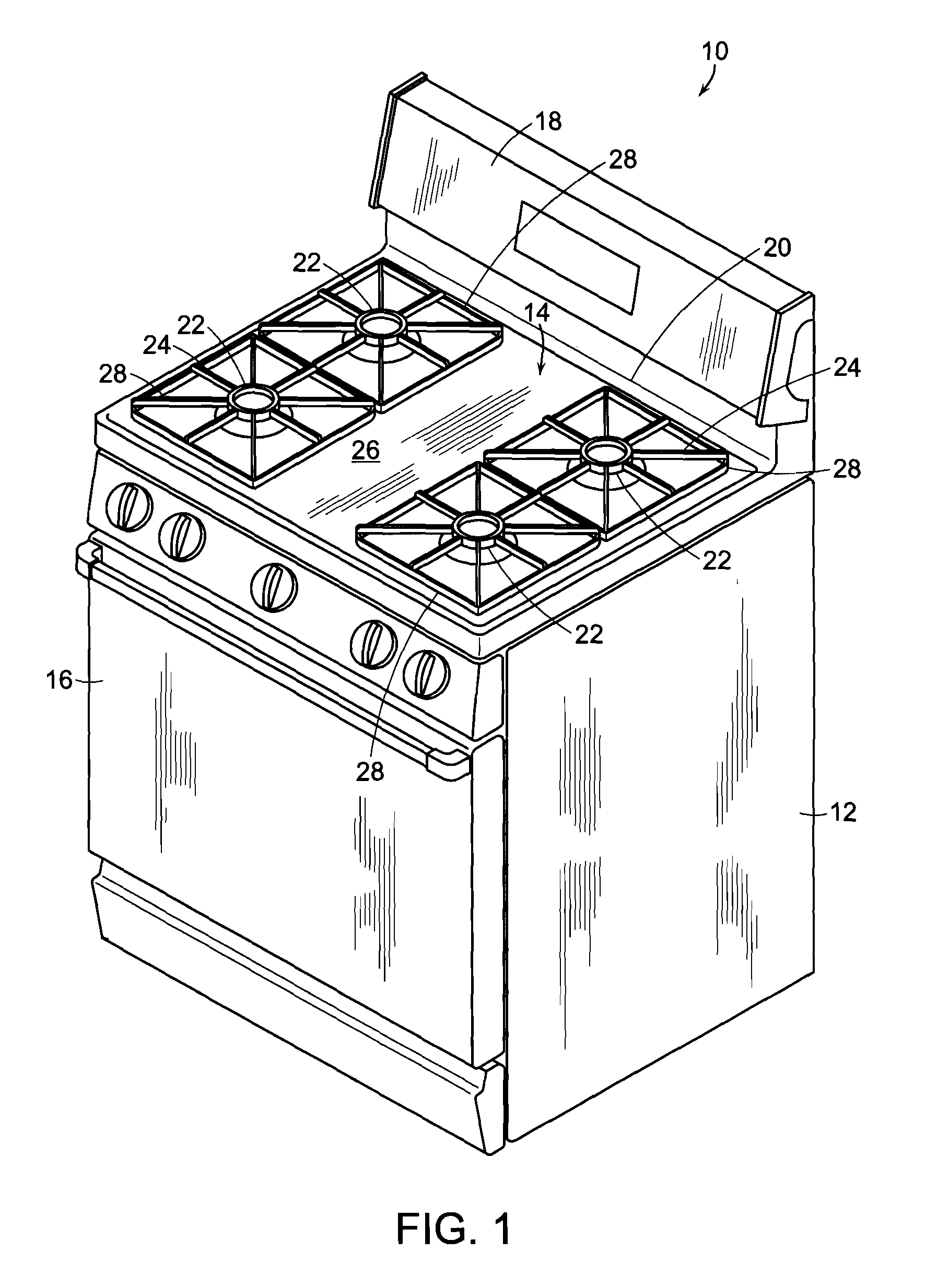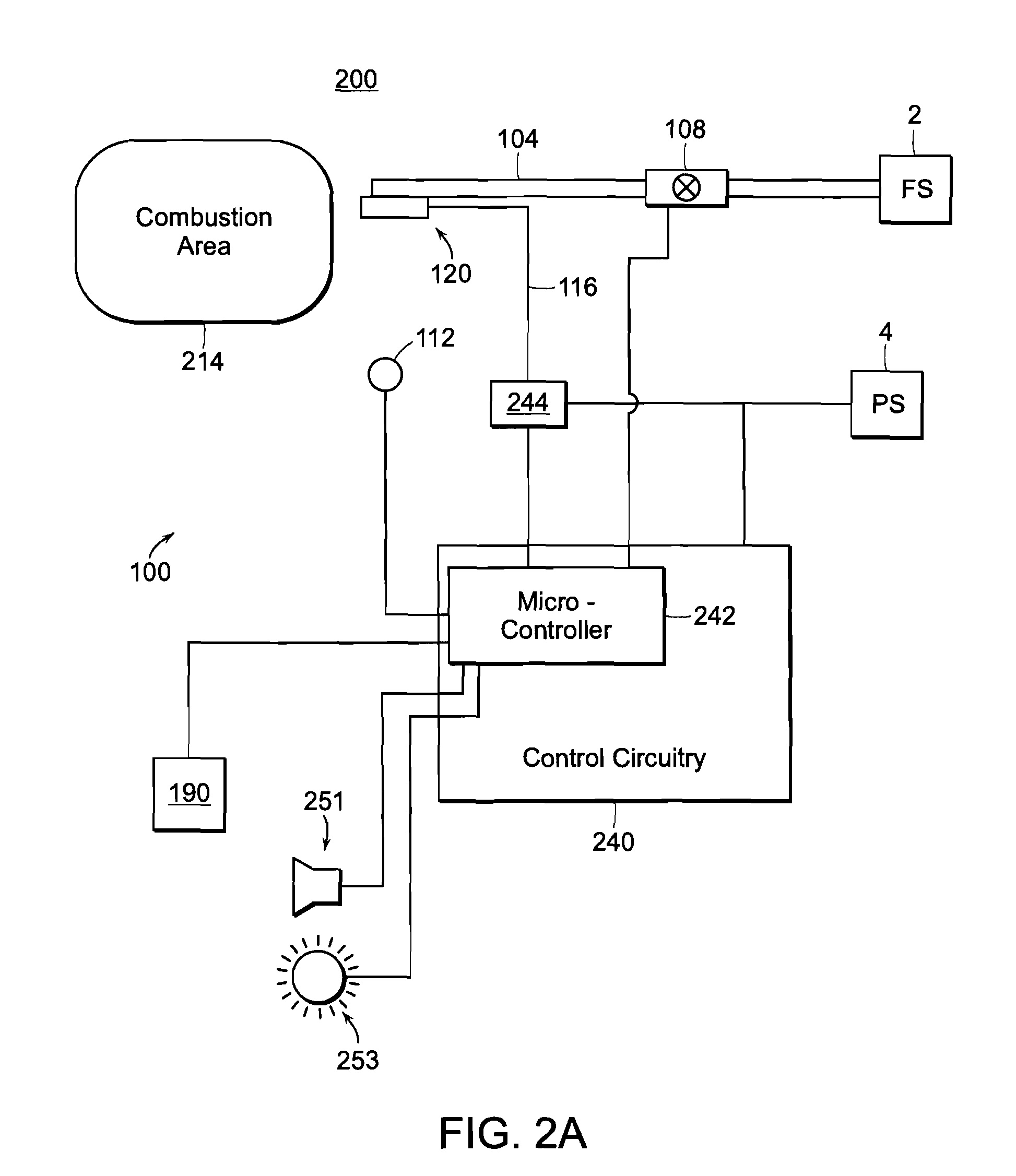Fuel gas ignition system for gas burners including devices and methods related thereto
a technology of fuel gas ignition and burner, which is applied in the direction of gaseous heating fuel, failure to ignite, domestic stoves or ranges, etc., can solve the problems of continuous generation of sparks, electrical and physical noise produced by sparks, and known ignition modules for gas-fired burners,
- Summary
- Abstract
- Description
- Claims
- Application Information
AI Technical Summary
Benefits of technology
Problems solved by technology
Method used
Image
Examples
Embodiment Construction
[0038]Referring now to the various figures of the drawing wherein like reference characters refer to like parts, there is shown in FIG. 1 an exemplary conventional free standing gas range 10 that includes an outer body or cabinet 12 that incorporates a generally rectangular cooktop 14. An oven, not shown, is positioned below cooktop 14 and has a front-opening access door 16. A range backsplash 18 extends upward of a rear edge 20 of cooktop 14 and contains various control selectors (not shown) for selecting operative features of the heating elements for cooktop 14 and the oven.
[0039]In the exemplary free standing gas range 10, the cooktop 14 includes four gas fueled burners 22 which are positioned in spaced apart pairs positioned adjacent each side of the cooktop. Typically, each pair of burners 22 is surrounded by a recessed area 24 of the cooktop 14. The recessed areas 24 are positioned below an upper surface 24 of the cooktop 14 and typically serve to catch any spills from cooking...
PUM
 Login to View More
Login to View More Abstract
Description
Claims
Application Information
 Login to View More
Login to View More - R&D
- Intellectual Property
- Life Sciences
- Materials
- Tech Scout
- Unparalleled Data Quality
- Higher Quality Content
- 60% Fewer Hallucinations
Browse by: Latest US Patents, China's latest patents, Technical Efficacy Thesaurus, Application Domain, Technology Topic, Popular Technical Reports.
© 2025 PatSnap. All rights reserved.Legal|Privacy policy|Modern Slavery Act Transparency Statement|Sitemap|About US| Contact US: help@patsnap.com



